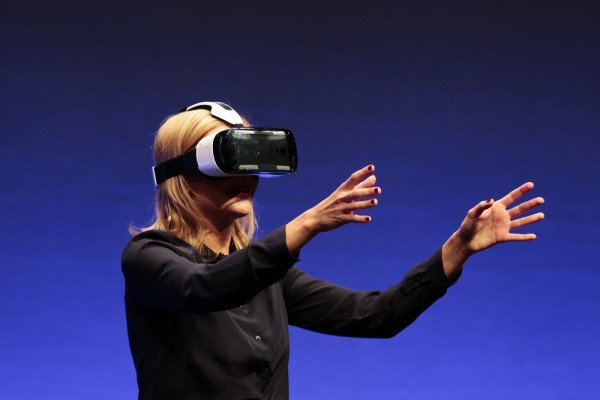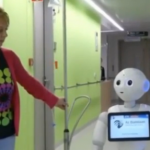
Radiologists can now use interactive VR to gain a 360-degree view of internal anatomy, improving understanding and treatment of complex conditions
Wednesday, June 13, 2018 by Edsel Cook
http://www.virtualreality.news/2018-06-13-radiologists-can-now-use-interactive-vr-to-gain-a-360-degree-view-of-internal-anatomy.html

Interventional radiologists can take a quantum technological leap forward when it comes to preparing for complicated procedures involving splenic artery aneurysms (SAA). The use of augmented virtual reality (VR) to reveal the internal anatomy of a patient better than standard volume-rendering (SR) software will enable safer and more precise surgeries, according to a ScienceDaily article.
During the 2018 Annual Scientific Meeting of the Society of Interventional Radiology, researchers from the Stanford University School of Medicine (Stanford) presented their findings on the use of VR to construct accurate medical images of the patient’s internals. According to collaborating author Dr. Zlatko Devcic, endovascular repairs of SAA are highly challenging due to a combination of intricate and unique variations in the anatomy of every patient.
“This new platform allows you to view a patient’s arterial anatomy in a three-dimensional image, as if it is right in front of you, which may help interventional radiologists more quickly and thoroughly plan for the equipment and tools they’ll need for a successful outcome,” he said. (Related: Entire generation may never leave the bedroom when VR porn hits mainstream, expert warns.)
According to the Stanford research team, an interventional radiologist can convert the patient’s pre-procedural CT scans into three-dimensional images that he can inspect and move thanks to VR glasses. Such an ability to control two-dimensional imagery in an open 3D space provides the next best experience to shrinking oneself and going inside the patient’s body.
This way, the physician can improve his grasp of the spatial distances involved between an aneurysm and the arteries around it.
VR tech allows unsurpassed 3D look at internal organs
The Stanford experimental study compared the performances of a widely-available visualization software system and the new virtual reality diagnostic method. Taking computerized tomographic angiography (CTA) images of 17 splenic artery aneurysms in 14 different patients, they reconstructed the 2D images into 3D equivalents.
For the VR system, they selected True 3D, a visualization software system devised by California-based EchoPixel.Inc. The AquariusNet program (made by another California-based company, TeraRecon) was selected to represent SR systems.
Three radiologists participated in the experiment. They independently employed both the VR method and the AquariusNet SR to diagnose the images of the SAA images.
Dr. Devcic and his fellow researchers compared the accuracy of the radiologists with each method when it came to identifying inflow and outflow arteries linked to the aneurysm. They used angiographic images as the gold standard.
The participants also used a four-point scale (with one as the lowest and four as the highest) to grade any alterations to their confidence in their diagnostic skills after trying out the VR method and comparing it with their earlier experiences using SR systems.
The Standford research team reported that both methods demonstrated similar levels of diagnostic accuracy. However, the radiologists expressed much higher confidences in their diagnoses when using VR, giving themselves a minimum score of at least three out of four points.
“Pre-operative planning is possibly the most important step towards successfully treating a patient, so the value of VR cannot be understated,” explained Dr. Devcic. He added that VR technology gives interventional radiologists a new and different way of viewing the internal structure of a patient, which increases the safety of their surgical operations.
Dr. Devcic believes that VR technology merits further investigation and development by his colleagues. VR-enabled pre-procedural diagnoses may very well speed up the surgical treatment process, which means patients will be exposed to far less radiation and contrast.
Learn more about the ways VR technology is changing human society by visiting VirtualReality.news.
Sources include:




